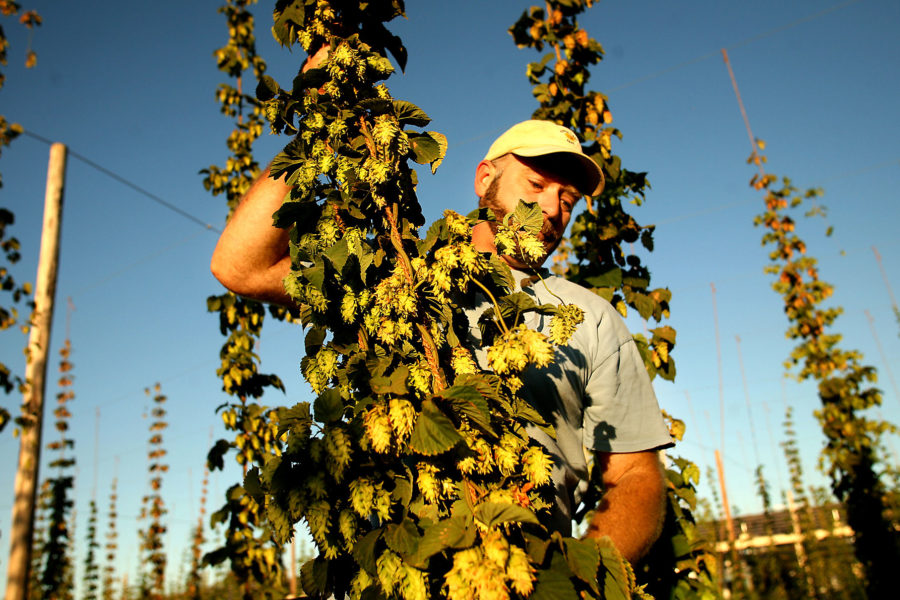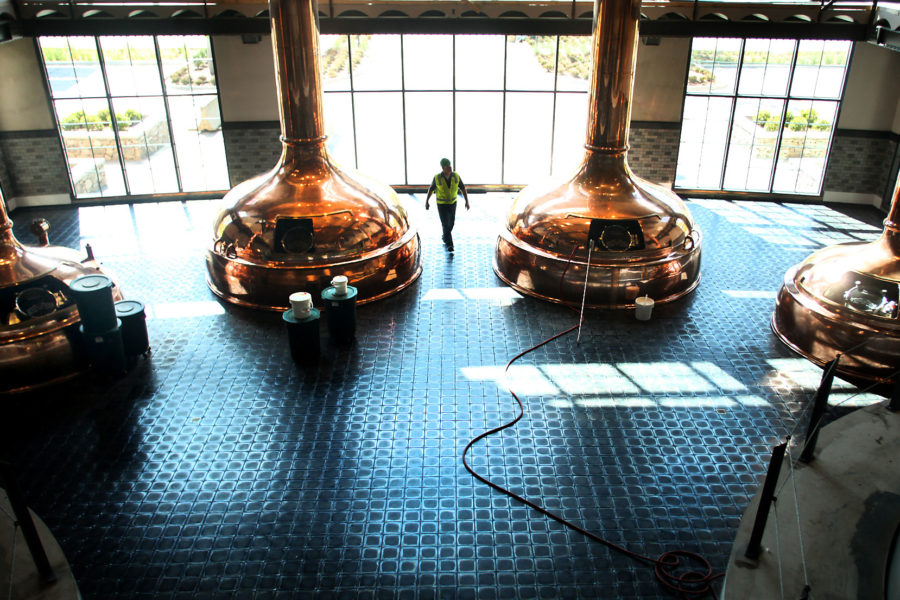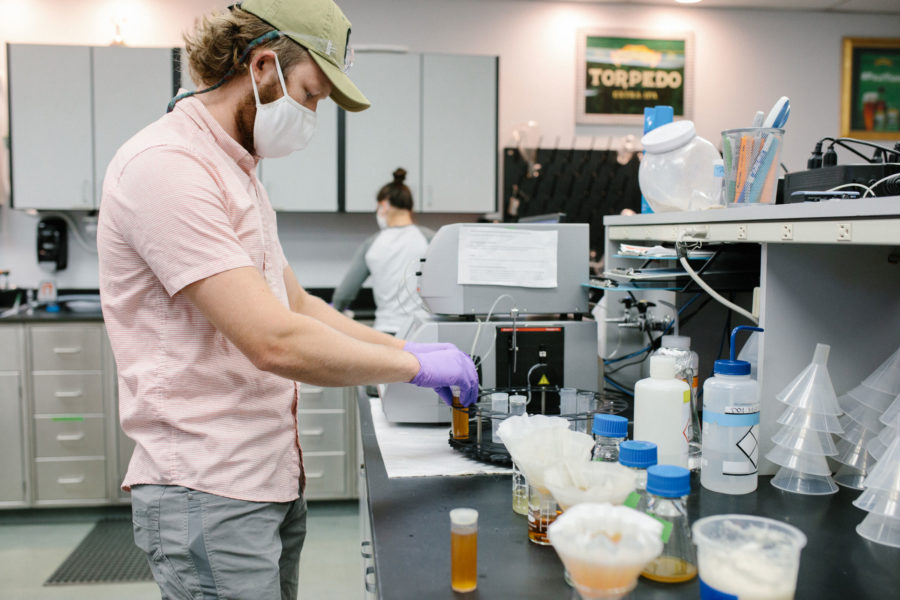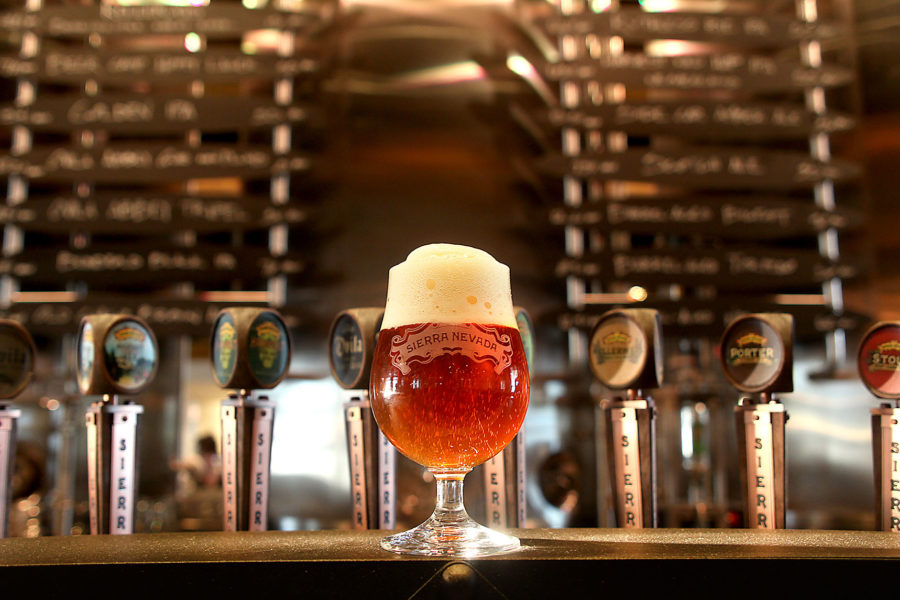Step into either of Sierra Nevada’s two breweries in Chico, California, or Mills River, North Carolina, and you’ll be immersed in a sensory exploration of sustainability. The gleam of solar panels as you park your car; the flood of daylight from massive windows; the hum of hyper-efficient systems working on everything from heat recovery to CO2 and water conservation; the warm, fruity smell of fermentation; and, everywhere, people smiling, enjoying a draft or two over a meal with friends.
Sustainability, efficiency, and a focus on the future are baked into every part of the Sierra Nevada experience. And it has been from the beginning. “It’s been an integral value for us since our founding in 1980. It’s literally built into the facility itself and the culture that’s come from it,” says Mandy McKay, director of sustainability and social responsibility at Sierra Nevada Brewing Co.
Founder Ken Grossman launched his first brewery in California just two years after Congress legalized homebrewing in 1978, beginning with a mindset that brewing beer shouldn’t be wasteful. He scaled the Sierra Nevada Mountains and saw a natural beauty he wanted to protect even as he dreamed of a better way to make beer. “[Grossman] is an engineer at his core,” McKay says. “He really hates waste. So if there’s anything leaving a process that isn’t recovered or we can’t bring back in, or we can’t recycle, or we can’t do something else with—he is constantly thinking about those things, and he has thought about those things for decades.”

Photo courtesy of Sierra Nevada Brewing Co.
Grossman built the first brewhouse of his family-run business himself out of cobbled together parts from recycled dairy equipment. His first highly successful beer was the pale ale. It shook the craft beer industry to its core and opened a door to a new kind of conversation—beer manufacturing was notoriously wasteful. It had to change, and it could, successfully. From the very beginning Grossman and his team passed up chances to produce beer the cheap and easy way—because that just didn’t jive with their ethos. An organic two-acre garden and orchard to produce food for the onsite restaurant? Seeking, and earning, Salmon Safe certification for the hops they grow onsite (used in the Estate Harvest IPA)? Saving 2.5 million gallons of water every year through recovery and reuse? All those things did jive with their ethos. But they didn’t stop there.

Sierra Nevada Brewing Co. Photo courtesy of Sierra Nevada Brewing Co.
By 2007 the Chico facility had solar, a system that would later grow to over 10,000 individual panels (2 megawatts of AC), taking care of about 20% of the brewery’s electricity needs as well as panels to help power Chico’s own super-efficient rail transfer facility (which receives cars full of malt for the brewery) offices, and an onsite daycare. In 2016 the Chico location added microturbines, which, together with the solar arrays, now provide more than 90% of the brewery’s electricity needs.
But energy waste reduction was only one of the many opportunities Grossman saw to change the way beer was made. “Anytime we have heat or steam leaving a system, we’re recycling it back into the same process or into another process. And then solid waste as well. We take time and effort to source, separate, and collect anything that’s coming out of the brewery: cans, bottles, cardboard, plastic strapping, bottle caps, scrap metal. Anything you can think of, we take the time to find an outlet for it, whether that’s recycling, composting, or reuse.”
Wastewater treatment and biogas recovery, heat and CO2 recovery, a biodiesel processor (which recycles old fryer oil used in the brewery’s restaurant) to provide fuel for delivery trucks, water conservation, drought-resistant landscaping (critical for drought-stricken California), and solid waste recycling—Sierra Nevada took the ideals of the green design industry and went one step further, all with the aim of brewing beer that bettered the landscape rather than simply taking from it. “It’s how we think, how we operate. It’s really embedded throughout,” McKay says.

Inside the Sierra Nevada quality lab. Photo courtesy of Sierra Nevada Brewing Co.
In 2015 Sierra Nevada expanded its operations to the East Coast, setting up shop in a swath of lush forest in Mills River, North Carolina. There, the sustainability practices and design principles learned at Chico evolved. They hired natural resource specialists to improve the health of the forest around the brewery, reclaimed the timber (cleared to make room for the brewery itself, also locally milled) used in the taproom, and made headlines. In 2016 Mills River became the first production brewery to earn LEED Platinum. “When we opened our second brewery in North Carolina, we committed to doing a LEED certified for brewery from day one.”
And, at the same time, they committed to making an impact in another way—on the people who visit their facilities and enjoy their products. “We do a lot of education on both the outside and the inside of the brewery. As you’re walking along a corridor or along the front, we have educational signage that talks about stormwater management and rainwater capture and the use of bioswales and permeable pavement,” she says. “You go there to maybe have a beer or lunch or go on a tour. But at the same time, you’re learning about sustainable design and features you can literally see right in front of you. I think it’s helpful to educate people in ways that don’t feel like you’re teaching them anything. That it’s just part of the experience. They’re there, they’re having a good time, and they’re also learning some pretty cool things.”

Photo courtesy of Sierra Nevada Brewing Co.
In 2020 things changed. With the global pandemic came new challenges and new opportunities. “We lost a lot of business. Bars and restaurants across the country closed,” McKay says. “People were drinking at home.”
Undeterred, they pivoted. “We had to quickly shift to really investing in our e-commerce platform and really understanding that. We weren’t doing a lot of shipping beer directly to consumers before. That was one thing we learned a lot about.” Once their taprooms were able to reopen, they also had to reimagine the experience both for customers and for the safety of their employees. “We had to very quickly get into the market of curbside and to-go ordering.” Social distancing, exceptional hygiene, reducing physical contact between employees and customers with things like QR code menus (with the added bonus of reducing paper waste) were already part of their repertoire. The pandemic merely intensified their use. And, McKay says, they plan to keep many of the changes in place. Interacting with customers in new ways also opens up more opportunities to teach and learn.
Long-term, their commitment to a better future includes an ever-widening circle of impact. Can one craft beer company really change the world? For Sierra Nevada, it’s a mountain worth climbing. “How can we work with our farmers and our growers, our distributors, and our haulers; how can we work with all of those people to reduce their footprint and their emissions?” McKay says. “Because they’re part of our footprint and vice-versa.”




